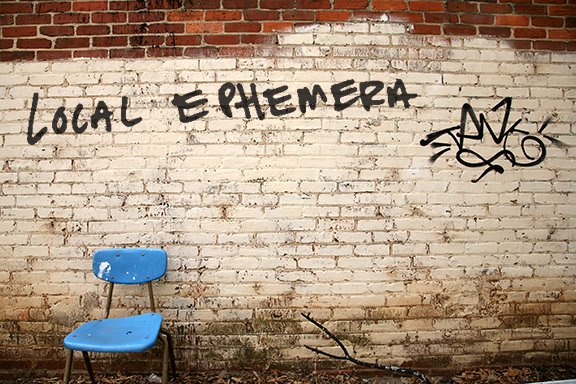
Walked over to Beep Beep Gallery to check out "Br'er," a new show of collaborative paintings by Michi and Dosa Kim.
 "Jockey Free"
"Jockey Free"The paintings are a response to Uncle Remus's stories of Br'er Rabbit and Bannerman's stories of the Little Black Sambo. Appropriating characters and exploring the darker social implications of the stories. Interestingly, this show is a sort of parallel to McCallum and Tarry's show "Another Country" currently at Kiang Gallery, albeit completely different in style and scope, the show statement states "Br'er is the conflict of two artists from very different ethnic backgrounds, disciplines, and design philosophies collaborating in an obvious contrast and clash." Like "Another Country," it is the contrast between the artist's ideology and art-making which give the works such a multi-layered intrigue.
 "Jockey Free" detail
"Jockey Free" detailThe Uncle Remus stories seemed to also serve as a starting off point for a broader analyzing of children's stories, i.e. the inclusion of mickey mouse ears, and present day social tensions. Seeing this reminds me of Beep Beep's past Nostalgia" show, which any of these paintings could have fit perfectly into and added that missing element of skepticism and critical commentary.
 "Ghee From India"
"Ghee From India"When I think back on Uncle Remus I can only remember my Dad's gripping performances of the animated southern drawl, definitely his most inspired impersonations at any bedtime reading, and my own amusement and anxiety over what I saw as that rabbit's recklessly dangerous behavior (I was a rather timid kid).
It's unsettling what caricatures can be so entertaining for kids, yet were inspired from exaggerated stereotypes and narrowed minds. The artist's state that the show was "inspired by children's stories that have been appropriated and misused as propaganda to perpetuate cultural stereotypes or beliefs, robbing the original story of its youthful nature."
The origination of the Uncle Remus stories is an interesting layering of cultures and interpretations in themselves, after doing a little wiki research, it appears the stories derived from Cherokee mythology and "storytelling traditions in Central and South Africa", later adopted into African American folktales, written down by Theodore Roosevelt's Uncle, published by Joel Chandler Harris, and later interpreted, in a saccharine sweet sort of way, by the unavoidable Walt Disney.
 "Ghee From India" detail
"Ghee From India" detailAs image rich and dynamic as these paintings are (see "Stay Cool Br'er" below) I found the inclusion of text unnecessary. I am biased though by an aversion to seeing text on paintings, which for me is too literal a device, carrying too concrete an interpretation, it inevitably distracts. It's a bit like the way Polygraph tests are considered inadmissible evidence in court. Because these tests cannot be proven to be 100% accurate always (what can really?) they are deemed too influential for a jury who would be unable to consider all other evidence independently when the implied credibility of the polygraph tests can so easily sway opinion. When it comes to the viewer's interpretation of a painting, they have no choice but to take the text into account.
Having said that though, it's hard to imagine these paintings without the scribbled writing, so there you have it.
 "Stay Cool Br'er"
"Stay Cool Br'er""Ahem!" said Brer Rabbit loudly, wondering if the Tar Baby were deaf. "I said 'HOW ARE YOU THIS MORNING?"
The Tar Baby said nothing. Brer Fox curled up into a ball to hide his laughter. His plan was working perfectly!
"Are you deaf or just rude?" demanded Brer Rabbit, losing his temper. "I can't stand folks that are stuck up! You take off that hat and say 'Howdy-do' or I'm going to give you such a lickin'!"
"I'll learn ya!" Brer Rabbit yelled. He took a swing at the cute little Tar Baby and his paw got stuck in the tar.
"I've got you this time, Brer Rabbit," said Brer Fox, jumping up and shaking off the dust. "You've sassed me for the very last time. Now I wonder what I should do with you?"
Brer Rabbit's eyes got very large. "Oh please Brer Fox, whatever you do, please don't throw me into the briar patch."
Brer Rabbit's eyes got very large. "Oh please Brer Fox, whatever you do, please don't throw me into the briar patch."
"Maybe I should roast you over a fire and eat you," mused Brer Fox. "No, that's too much trouble. Maybe I'll hang you instead."
"Roast me! Hang me! Do whatever you please," said Brer Rabbit. "Only please, Brer Fox, please don't throw me into the briar patch."
"Roast me! Hang me! Do whatever you please," said Brer Rabbit. "Only please, Brer Fox, please don't throw me into the briar patch."
 "Change Come"
"Change Come"This painting is awesome. "Change Come"exemplifies the dangerous implications lurking beneath the lamb-skin of children's stories. There is a brooding evil, quick as Br'er rabbit, sticky as the Tar Baby, a face off between laughter and darker intentions.
 "Change Come" detail
"Change Come" detailAnd speaking of tar, the black line work of the painting has a glossy, crackled, look about it that really feels like dried tar. The use of color in tandem with the line work increases the movement and intensity, building a stage around the bold forms, adding stream of consciousness, kind of like the mind's illustration of the story told.
 "Change Come" detail
"Change Come" detail"Br'er" is up at Beep Beep Gallery until March 23rd 2008. Check it out while you still can.


1 comment:
Great review!
This was one of my favorite shows of 2008.
Post a Comment